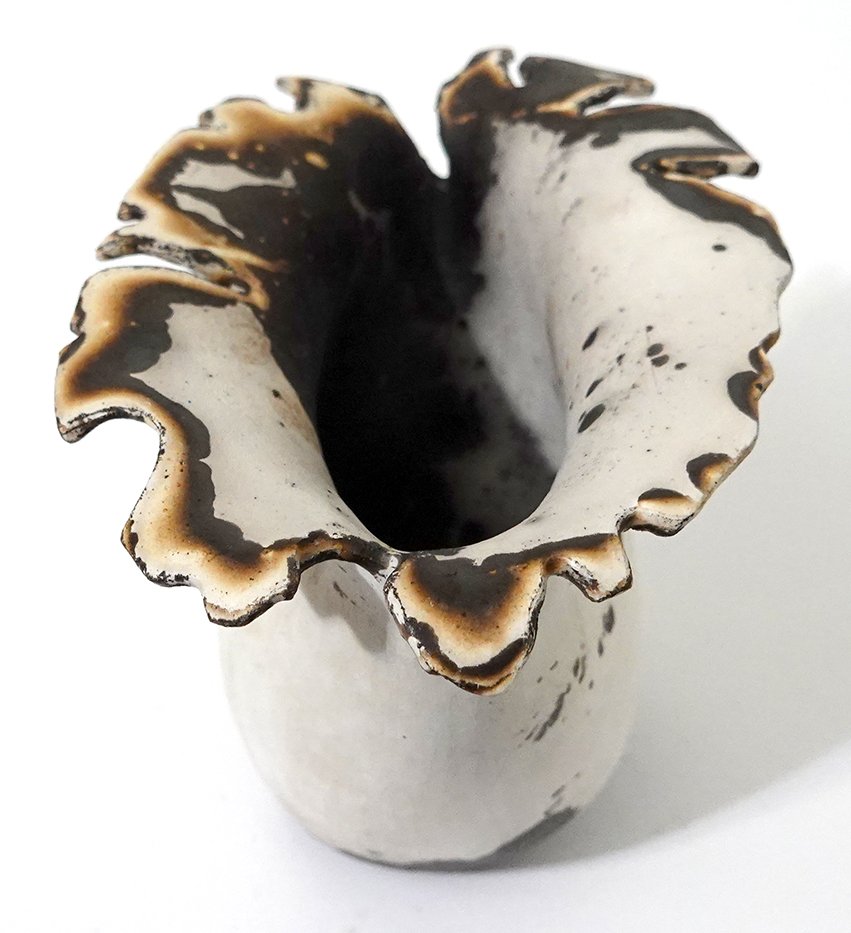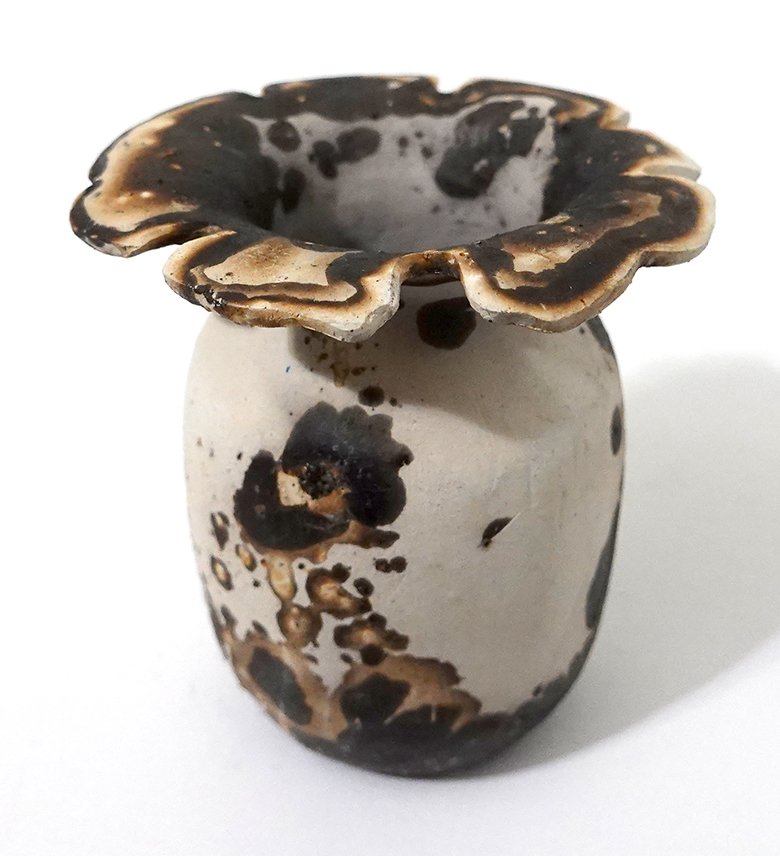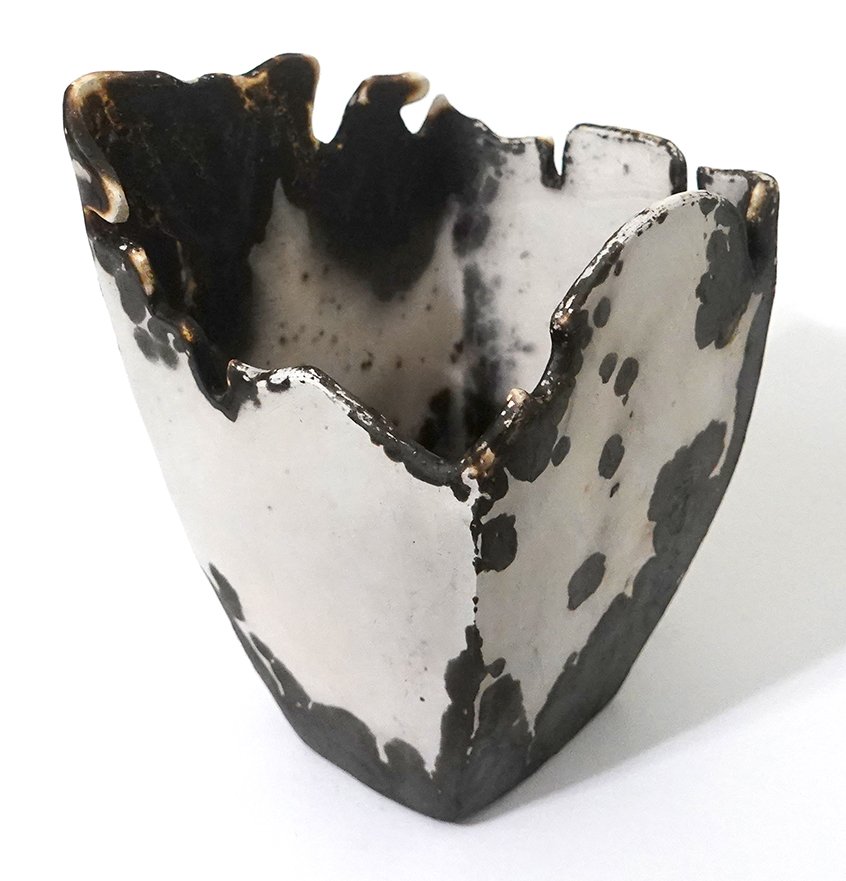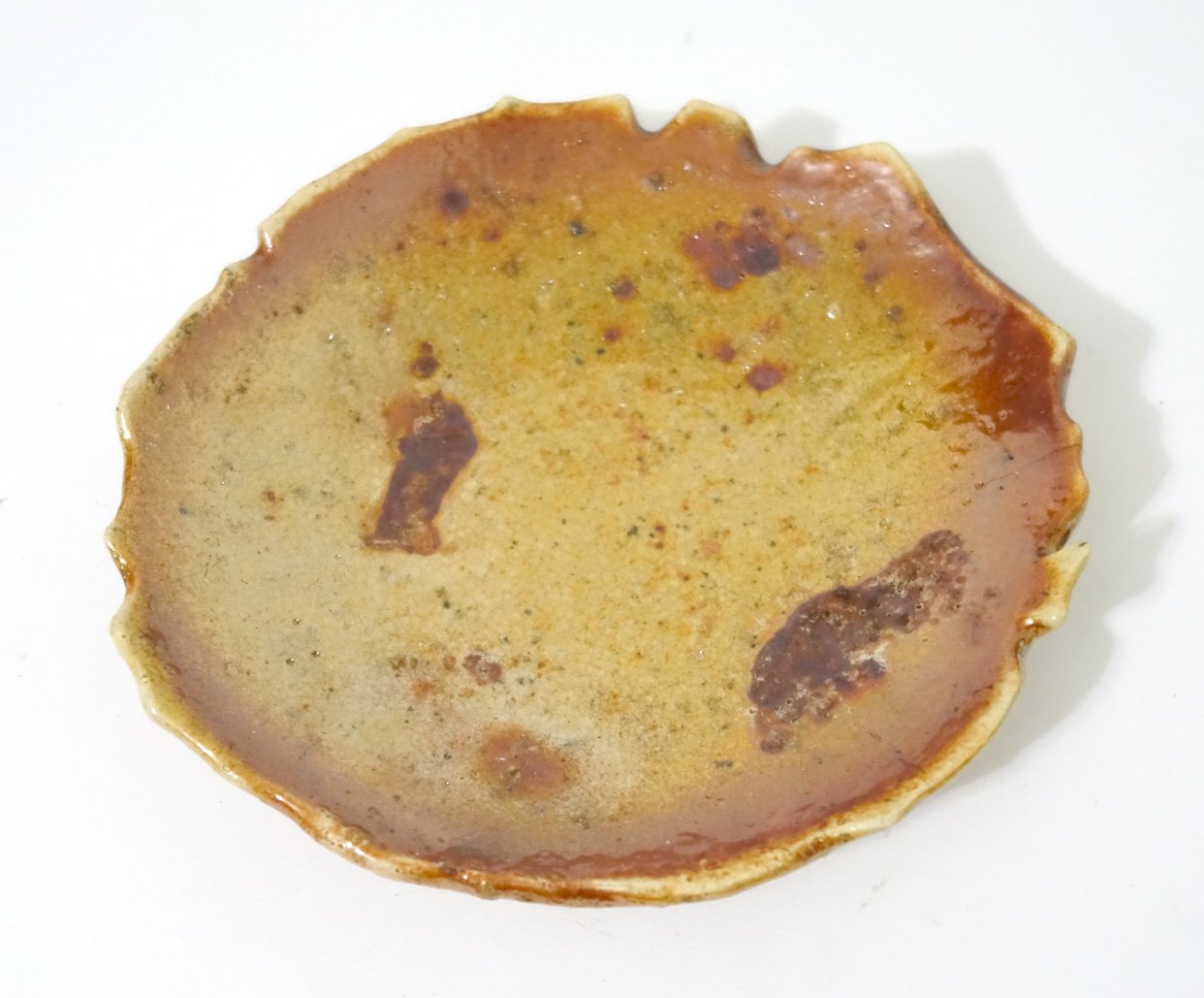I only fired four pieces with the obvara process this go-round, as I had run through a lot last time and I mostly wanted to learn the slip resist methods at this workshop. However, I wanted some obvara burnished pottery to compare to my previous unburnished works, and I’ve also decided my spherical handbuilt pots are a somewhat signature decorative form and so I wanted to have some obvara orbs. I did a smallish bowl as well.
The burnish was a mixed success with obvara - it delaminated in a few spots on two of the orbs during the dunking, which to my eye is kind of unsightly as the revealed clay layer beneath is bright white, so I color-matched and painted those in with acrylic. However, one orb and the bowl had no delamination accidents, and the resultant sheen on all four pieces is beautiful. Overall, I am happy with these and would be willing to burnish for obvara again.
Below is one photo of each of my four new obvara ceramics from my April 2024 Dakota Potters Supply workshop!





































